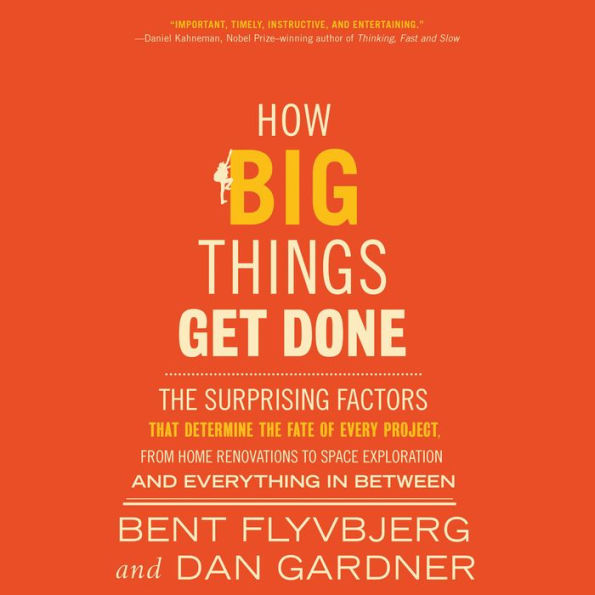Publishers Weekly
12/12/2022
This sharp study by Flyvbjerg (Megaprojects and Risk), a professor emeritus of program management at Oxford University, and journalist Gardner (Superforecasting) draws lessons in planning from megaprojects across the globe. Surveying the budgets and schedules of hundreds of massive development projects, the authors examine construction successes and failures to offer guidance on how to plan better for projects of any size. They extoll the importance of accurate forecasting and explain that progress on Hong Kong’s high-speed rail project in the early 2010s appeared bungled largely because the corporation overseeing construction had projected an unrealistic forecast that they couldn’t meet. Creating better predictions, the authors posit, requires comparing one’s project to similar projects to get a reasonable estimate, something the Hong Kong transit authority failed to do. On the successful side, Flyvbjerg and Gardner hold up the Empire State Building, which was completed 17% under budget, as an exemplar of the “think slow, act fast” approach that emphasizes rigorous analysis and testing before breaking ground. The stories about the high-stakes world of megaprojects fascinate, and the authors excel at pulling from them broadly applicable lessons on foresight and planning. Readers will find this a boon. (Feb.)
From the Publisher
Entertaining . . . The picture that [Flyvbjerg] and Mr Gardner draw of why projects, large and small, tend to go wrong is compelling. . . . There are lessons here for managers of all stripes.”—The Economist
“Stories of gigantic and costly failures, from the Sydney Opera House to successive editions of the Olympic Games, are entertaining and chastening in equal measure. But Flyvbjerg and Gardner also manage to extract valuable lessons about how to plan, forecast and execute any size of project, be it a kitchen remodelling or a high-speed trainlink.”—Financial Times, Best Summer Books of 2023: Business
“Ignore [this book] at your peril.”—Peter Coy, The New York Times
“[How Big Things Get Done is] a book that every legislator, city council member and corporate executive ought to read.”—The Wall Street Journal
“Having researched the properties of planning errors, I am confident that nobody has studied the topic more broadly and deeply than Bent Flyvbjerg. His focus ranges from the Olympic Games to the renovation of your doghouse.”—Nassim Nicholas Taleb, distinguished professor of risk engineering at the NYU Tandon School of Engineering, and author of the Incerto series
“[How Big Things Get Done] has plenty of tips to help ensure that [personal renovation projects] get done on time and on budget.”—Morningstar
“A wise, vivid, and unforgettable combination of inspiring storytelling with decades of practical research and experience . . . Everyone who deals with large projects is already desperate to read this book. The rest of us will take great pleasure in learning from it anyway.”—Tim Harford, author of The Data Detective
“This book distills the best scientific advice on planning big projects. And it is arguably the bargain of the century.”—Philip E. Tetlock, co-author of Superforecasting
“How Big Things Get Done . . . is a crystal-clear pattern of surprising reasons why almost all big human projects fail to deliver as expected—and a road map for the book’s lucky readers to avoid them.”—Ola Rosling, CEO and co-founder of Gapminder; co-author of Factfulness
“If we’re to make it through these next few decades, we’re going to have to build a lot of stuff—and we’re going to have to do it cheaply and fast. Here’s a very useful handbook!”—Bill McKibben, author of The Flag, the Cross, and the Station Wagon
“Flyvbjerg’s study of big construction projects worldwide has led him to formulate the iron law of megaprojects: over budget, over time, under benefits, over and over again. His deep understanding of why big projects fail—and occasionally succeed—makes this book a truly fascinating read.”—Gerd Gigerenzer, author of Gut Feelings
“In this moment where resources are growing more scarce, Bent is pointing toward a way of developing projects that uses our environmental, human, and financial resources in a more equitable and profitable way for society.”—Frank Gehry



